Opinion
Humane capitalism needed to generate national wealth
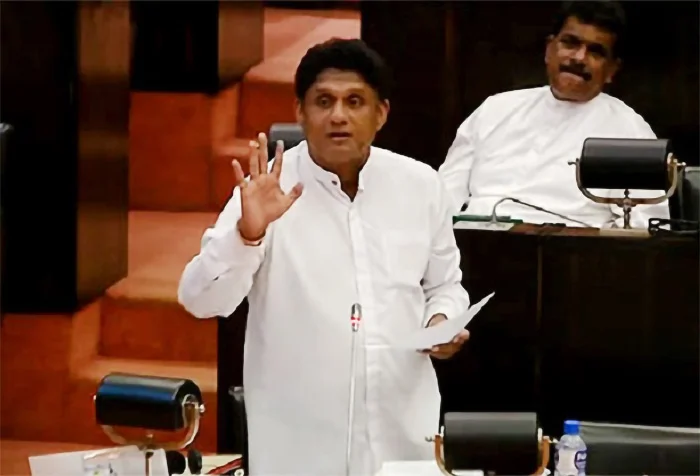
(Text of Opposition Leader Sajith Premadasa’s speech in Parliament during the ongoing debate on Budget 2025)
When analysing the solutions that the 2025 Budget should provide for the country, it is crucial to examine the mandate given to implement such a budget and how that mandate has been executed.
The policy framework presented to secure the mandate was “A Thriving Nation – A Beautiful Life” and “Country to Anura”. We must assess how much of these policy features are reflected in the 2025 Budget.
Looking at the budget framework, its presentation, and its unveiling, it is clear that this budget does not align with the promises made or the mandate received. I would like to substantiate this argument with evidence, data, and facts.
On page 105 of the ” A Thriving Nation – A Beautiful Life” policy document, there is a commitment to conduct an alternative debt sustainability analysis when the current government came into power. What has happened to that promise? Instead, what we see today is an unbearable burden and hardship imposed on the people, with the benefits they deserve being severely restricted.
Under the 2024 Fiscal Management (Responsibility) Act, primary expenditure is capped at 13% of GDP, and the primary balance is limited to 2.3% of GDP. Such limits are imposed in only about 10 countries worldwide, including Guatemala, Ethiopia, SriLanka, Venezuela, Nigeria, Yemen, Bangladesh, Lebanon, and Haiti.
Capping primary expenditure at 13% of GDP and maintaining a primary balance at 2.3% of GDP were not election promises of this government. This is not the execution of a mandate; it is a surrender of the mandate. It is a destruction of the mandate, forgetting what was promised, and entering into harsh and oppressive agreements with the International Monetary Fund (IMF) and sovereign bondholders.
This does not mean we advocate for withdrawing from the IMF program. Instead, we believe in entering a new, more people-centric and humane path that prioritizes the welfare of people.
These fiscal limits make it impossible to correct for externalities or address social costs. The responsibility of a government is to provide public goods, and these limits hinder that. They also restrict social redistribution. International studies show that capping primary expenditure and primary balances is counterproductive to a country’s development. Yet, the government has ignored all this, renegotiated agreements, and entered into new ones.
In essence, the government, which came to power with the people’s mandate, has completely surrendered that mandate.
I remember a statement made by President John F. Kennedy: “The great enemy of the truth is very often not the lie, deliberate, contrived, and dishonest, but the myth, persistent, persuasive, and unrealistic.” This statement holds great relevance today.
Many people are lamenting that they do not understand the increase in salaries. There is confusion about what will happen to allowances and how they will be structured. We must understand this confusion. This budget has been prepared within the constraints of 13% primary expenditure and a 2.3% primary balance of GDP. In reality, the amount of funds available to rebuild the country and empower the people is very limited.
We have met with the International Monetary Fund (IMF) on several occasions. I, along with Minister Harsha de Silva, Minister Kabir Hashim, Minister Eran Wickramaratne, and others, have clearly stated that we are working with the IMF and that we are moving forward with their program. However, we do not dance to their tune. We acknowledge that the IMF program creates hardship and burdens, and there are costs involved. But we must minimize these hardships and burdens as much as possible.
Yet, the President comes to Parliament and says that we must forget all the promises made on election platforms, forget the people’s burdens, tears, and pain, and ignore all these difficulties. He claimed then that by November 2024, the country’s economy would face significant shocks. The President is taking over the agreements negotiated by the previous Ranil Wickremesinghe government wholesale.
We see this as a betrayal of the people’s mandate. On one hand, it is a betrayal of the people, and on the other, he speaks of the lost decades. Will we lose another decade due to this decision? We could have made a better, more beneficial decision for the country—one that reduces burdens instead of increasing them, provides relief instead of hardship, and offers some solution to the people’s cries.
The President has firmly stated in this House that they will be ready to repay our debt by 2028. That is a good thing. Our hope is that we can achieve this. However, we do not endorse the tribal political culture that creates crises within the country and transfers power. To repay the debt by 2028, it is essential to boost economic growth and increase state revenue. There is a fact that no one talks about, and many are hiding it.
Since 1975, 75 countries have implemented IMF agreements. Of these 75 countries, 59% have inevitably had to enter second, third, and fourth debt restructuring programs. No one talks about this or informs the public. Only 41% of countries have successfully managed their affairs with a single agreement and debt restructuring. Honestly, I hope we are among that 41%. I pray that we do not have to undergo another debt restructuring. If that happens, it will lead to a severe economic collapse.
Our country should have stayed on the path of debt sustainability, but it has deviated from that line. Our country needs a higher economic growth rate and a faster rate of increasing state revenue. Otherwise, we will have to undergo another debt restructuring.
This revelation came to light during discussions I participated in with a team that advised the previous government until the last moment on formulating the current IMF agreement and sovereign bond agreements.
Even if we cannot stay on the debt sustainability line, we may have to undergo a second or third debt restructuring. If that happens, Sri Lanka will face a global crisis. To prevent this, the country’s economy must grow, and state revenue must increase.
The President stated in his budget speech that they would achieve a 5% economic growth rate in 2025. That would be good if it can be achieved. However, the President’s speech mentions that according to the World Bank, our country’s poverty rate is 25.9%. These are the statistics presented by the President in the budget speech. But while the President accepts the World Bank’s poverty statistics, the World Bank states that the economic growth rate in January 2025 will be 3.5. The President has accepted the poverty rate of 25.9% while citing World Bank statistics.
According to the President, the economic growth rate is 5%. The World Bank states that the economic growth rate in January 2025 will be 3.5%. There is a deficit in the economic growth rate. If this deficit is not bridged, we will fall into difficulty. As a country, we must definitely move towards rapid economic growth. However, this budget does not clearly indicate how this will be achieved.
Similarly, we need to increase our Gross Domestic Product. This budget has not provided any clarification regarding expenditure methodology, revenue methodology, and production methodology. There is no clarity in this budget about how to maintain a high economic growth rate to begin debt repayment in 2028. We must be realistic in presentation.
The whole country is complaining today because of the wrong agreement reached on the primary balance and primary expenditure. There is confusion about salary increases and no clarity. There is no clarity about how salaries will be received by grades. There is no clarity about how much will be received this year and next year. There is confusion everywhere. There is no explanation about salary increases.
There should be a clear explanation of how the economy will grow rapidly. There should be a clear explanation of how to increase state revenue. The agreement with the International Monetary Fund and the International Sovereign Bond agreement have been entered into based on several scenarios. The scenario used as the basis for this is completely wrong. That’s why we stated that an agreement should be reached. This process created based on the agreement has created an unrealistic target that cannot achieve the economic growth rate. They have agreed to an unrealistic target regarding state revenue. The main reason for this is that the current government also agreed to a weak agreement. The current government is following in the footsteps of the former President.
During the period of electing 159 MPs, they should have discussed with the International Monetary Fund and international sovereign bondholders to change the signed agreements and move to a new agreement that would put less pressure on the people, provide more relief, less distress, and more strength. I request that they consider this even now.
I request immediate discussions with the International Monetary Fund. The economic growth targets are not realistic. State revenue targets are not realistic. Primary balance and primary targets are not realistic. The country will have to go for a second debt restructuring before debt repayment in 2028. This is a serious situation. The government is heading towards a very difficult destination. The government is heading in the wrong direction.
I was shocked to hear what the team that advised on creating the International Monetary Fund agreement and International Sovereign Bond agreement said. It hasn’t even been three months since discussing the end of the agreement. They say we need to go for debt restructuring again. These are not jokes. It’s our country’s people who face distress and pressure from these. Through domestic debt restructuring, they tapped into the Employees’ Provident Fund. Why can’t the current government bring a proposal to Parliament to do justice to the Employees’ Provident Fund and Employees’ Trust Fund?
Similarly, Aswesuma is not a solution for eliminating poverty. There should be a production program, consumption program, savings program, export program, and investment program to eliminate poverty, but none of these exist. The selection for and exclusion from the Aswesuma program are done without identifying the poverty line and without conducting a household income-expenditure survey. It has been done without knowing information about poverty as well as food and non-food expenses. How can a poverty elimination program be implemented that way?
There are several serious problems with the limitations the government has created. There is serious confusion in every service including teachers, doctors, nurses, workers, and office employee (KKS) staff. The government has been unable to provide the promised Rs. 20,000 salary increase. The limited primary expenditure limit is thirteen percent. The primary balance is limited to 2.3. Within this limit, the government cannot implement the promised “A Thriving Nation-A Beautiful Life” policy statement. Within these limited resources, you have placed the necessary limitations yourself to not implement this, and you have become a prisoner yourself.
The elderly retired community used to receive 15% interest on their Rs. 1.5 million savings. That saving has now been reduced to one million. The savings interest rate is only about 10%. This is a serious problem for the elderly community. Various benefits have been provided for women. That’s a good thing. But the most serious problem has become labor force participation. It’s thirty-four percent. We should work to bring that to 45%. Verite Research has prepared data-centric proposals to implement maternity allowances with state patronage. It costs about six to seven billion rupees. If such an amount is spent, women’s labor force participation can be brought to a higher level.
Tax money from alcohol and cigarette manufacturing companies is not being properly collected. A wrong tax formula is being implemented. The government should look into this and work to increase state revenue.
There are several proposals to help the pre-school system. It has been proposed to increase pre-school teachers’ allowances. But there are very few pre-schools in the public service. Don’t implement it selectively. It should be implemented as a comprehensive program. We are happy about the increase in Mahapola scholarships. The Mahapola scholarship hasn’t even been paid for the past few months. The government has announced increasing an allowance that hasn’t been paid. I believe the government will work to pay both the increased Mahapola allowance and the unpaid Mahapola allowance.
Farmers are currently under severe pressure. Not just the paddy purchasing process, but the purchasing process of other crops has not been properly implemented. I’m not making this accusation against the government. No previous government had a proper cultivation formula with a clear cycle. This should be legislated. It should be legislated through a Parliamentary act.
The fishing community is waiting for the fuel subsidy. Many fishermen have become destitute. We talked about the wages of the Malayaha community. We believe we need to go beyond that. That Malayaha community has no land ownership, no house ownership. They should be empowered by giving them ownership of cultivation and lands, and the right to live in their own house. This community should be transformed into small tea estate owners who contribute 60% of production by utilizing 40% of the country’s land within the national production, with their own small tea estate in this country.
A sustainable solution should be provided to the unemployed youth community too by distributing some portion of uncultivated land. More than increasing salaries, such a process adds something to national production.
Many people are waiting for appointments after training as nurses. The family health sector is the same. There are about thirty-five thousand graduates. The President has promised to prepare a proper program for 35,000 graduates. Please don’t forget the promise given to unemployed graduates. Work to implement that too.
The current government hasn’t made any systemic changes. The Gotabaya-Mahinda Rajapaksa system hasn’t changed. Projects are implemented according to the government’s wishes. Political victimization is happening severely. Mahinda Weerasuriya was the Chief Secretary of Sabaragamuwa Province. Now he has retired. Mrs. Deepika, the Chief Secretary of the North Western Province, and Mrs. Damayanthi Paranagama, the Secretary of Uva Province, have been removed from their Chief Secretary positions. Nandana Galagoda, the Nuwara Eliya District Secretary, has also been removed. Mr. Wasantha Gunaratne has been removed from the position of Ratnapura District Secretary. Ganesh Amarasinghe has been removed from the position of Matara District Secretary. Why are they doing this? People didn’t vote for you to carry out such political victimization. This is wrong. Stop the victimization immediately.
I hope this budget will be successful. We will also support implementing the positive, people-friendly provisions in it. We will be a strength to add value to the country. Please let’s work with a mindset of providing decentralized funding. Let’s work under a new program. This budget shows no understanding of the external environment.
We need to diversify our export market. We depend on just a few exports. There is potential to create diversification in export destinations in other power regions of the world. There are no details about this in the budget. Foreign direct investment must necessarily be brought to our country to rebuild it. A special program should be implemented for this. We are ready to support this. We must compete with other countries in the world. I don’t see a clear program for this within this budget speech.
Within our political policy, in the ten-fold methodology we follow, we follow a social democratic program. Through this, humane capitalism is needed to generate wealth in the country. Limited state intervention is needed to correct the imbalances that occur within humane capitalism. While protecting the welfare state and increasing its efficiency, more action should be taken to provide resources to it. A results-oriented and time-bound poverty eradication program is needed. A balanced economic growth rate should occur at the Divisional Secretary level across all nine provinces of the country. An agriculture sector, fisheries sector, and industrial sector enriched with new technology should be created. All people should be empowered as Sri Lankans without discrimination. Democracy should be strengthened. Sustainable development should be strengthened. Foreign relations that add value to the country should be implemented. This ten-fold program is the program we follow. Standing within that framework, we will provide our strength to build this country.
Opinion
The Buddha I believe in

By Dr Upul Wijayawardhana
Not being a believer in past Buddhas or future Buddhas, there is only one Buddha I believe in, and have no problem with the term Buddha either, though many synonyms are associated with this great personality. G A D Sirimal, who has a keen interest in Buddhism, has directed a few questions, after reading my piece “Imagining what the Buddha looked like” (The island, 12 February) and the preceding is my response. Sirimal is of the opinion that as the term Buddha is derived from the Sanskrit term Buddhi which means wisdom, there is a Buddha in all of us and the historical Buddha should be referred to as Gautama Buddha. Even Mahayana does not go to the extent of calling all of us Buddhas though it claims that as one cannot attain enlightenment by Arhathood, all should be Bodhisattvas. Though I cannot find fault with the term Gautama Buddha, some others may argue that it would be more accurate to call Him Siddhartha Gautama Buddha, as Gautama is the family name, not the given name. All this is superfluous as, by consensus, we know who we are referring to by the term Buddha. For me, there is no other Buddha.
It is very unlikely that Siddhartha Gautama was referred to as the Buddha during his lifetime and is likely to have been called Sakyamuni, the ascetic of the Sakya clan, or simply by his name Siddhartha Gautama. The first surviving reference as the Buddha is in the third century BCE Edicts of Ashoka. The Lumbini pillar inscription, which marks Emperor Ashoka’s pilgrimage to the birthplace of Prince Siddhartha, refers to Buddha Shakyamuni. There are many epithets used including Samana Gothama in some Sri Lankan and South Asian texts. Whatever descriptive epithets are available it is simple enough to refer to the Buddha as such. Anyway, the Buddha never referred to himself as the Buddha, referring to himself as Tathagata. There is no definition of the word Tathagata but roughly means one beyond all transitory phenomena.
From an evolutionary perspective, considering the relatively brief period of human existence, it is extremely unlikely there would have been previous Buddhas unless in parallel universes, the existence of which is yet to be proved. Believing in a Maitreya Buddha necessitates a belief in predetermination and if everything is predetermined, the cause-and-effect theory of Buddhism is invalidated. It is because of these facts that I believe in only one Buddha. Further, if as some Buddhist priests continue to refer to us as we aspire to achieve enlightenment in the Sasana of Maitreya Buddha, are we not insulting The Buddha? The path He showed is still open and all that is needed is to follow rather than wait for a future Buddha!
Sirimal also questions whether the Buddha was enlightened, as an enlightened one cannot make mistakes and cites two important examples; the ordination of Prince Rahula and the much-discussed question about the Buddha’s attitude towards the ordination of women.
Though the Buddha found the reason for the ever-pervasive dissatisfaction and the way of overcoming that, there was no claim of infallibility. Problems have arisen due to the process of deification that had taken place but if one treats the Buddha as a human being, though he possessed a super intellect, all this could be explained. When it was pointed out by King Suddhodana that ordaining Rahula without consent was irregular, the Buddha never claimed that what he had done was correct or he could do no wrong as he was enlightened. Instead, He admitted his fault and laid down rules.
The Buddha was a true democrat introduced rules on consensus. The Vinaya Pitaka is the best example of how rules should be laid down. When any offence was committed, the punishment was laid down but it was not applied retrospectively, thus establishing the principle that retrospective justice is invalid, long before lawyers did!
Ordination of women or how it is stated in the texts is an interesting topic for debate and I have written about it previously at length. It is full of distortions but to this date many who believe in male supremacy take it as gospel truth, ignoring the fact that we are reading accounts as recorded by males. The Buddha propounded the equality of all, denouncing the caste system propagated by the Brahmins. Is it believable that His concept of equality did not extend to women? Did Ananda have to remind him that Maha Prajapathi Gothami suckled him? Did the Buddha get it completely wrong that by ordaining women the duration of his doctrine would be reduced from 1,000 to 500 years? All these fallacies make it very likely that most of these were distortions. Unfortunately, because of these distortions Meheni Sasna is still under threat in Sri Lanka though we shout from rooftops that we are the guardians of the Buddha Sasana!
The Buddha was a human being, not supernatural, with an intellect so far unsurpassed in human history. He laid the foundation for scientific thought as well stated in the Kalama Sutta. His analysis of our dissatisfaction in the form of the Four Noble Truths, continues to be the way all scientific facts are elucidated. The Middle path, the Buddha showed, is recognised even in politics of modern times. His analysis of the human mind has not been bettered by scientists so far. His explanation of how senses work, including the mind as the modifier sense explains things much better than the accepted scientific explanations based on five senses. Afterall, we see what we want to see and we hear what we want to hear!
What is important is not splitting hairs on what to call Him but to follow the path the Buddha showed us.
Opinion
Dr Don Robert Seneviratne
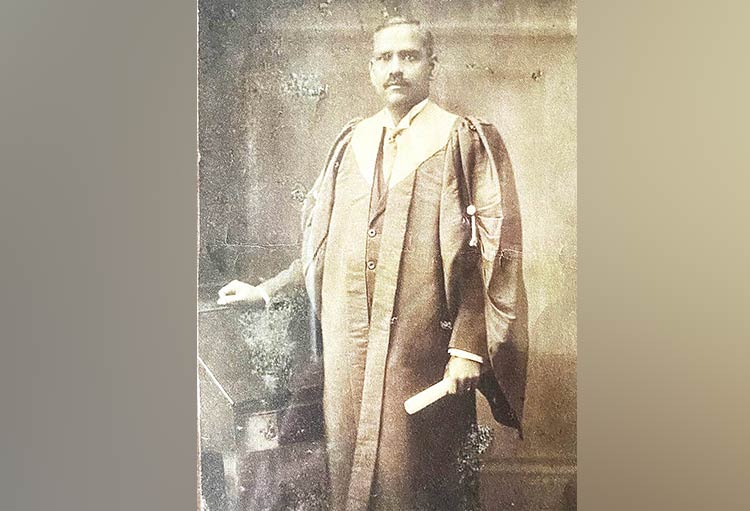
My father Don Robert Seneviratne was born in 1887. Having had his early education at Prince of Wales College, Moratuwa, he entered the Medical School in Colombo and passed out with a LMS (Licentiate of Medical School). After a few years he proceeded to the Universities of Edinburgh and Glasgow earning their Licentiates.
When he returned to Ceylon and to his birthplace Kaluwana in Homagama, he was warmly welcomed by the people as being the first person from the village to have gone abroad and qualified in the UK. My mother recalled that he was welcomed by pandals of plaintain trees.
After a long tenure in government service as a District Medical Officer in places like Deniyaya, Elpitiya, Pimbura and Galle where he served as Judicial Medical Officer, he was appointed Police Surgeon to the Police Department in Colombo. He died suddenly in 1946 after a heart attack and was accorded a Police funeral.
This is a very belated tribute to my father. Whatever I am today and whatever I may have achieved in life is due to the very close and devoted upbringing given to me by my father and my mother, Laura Seneviratne.
May they both attain the Supreme Bliss of Nibbana.
Nihal Seneviratne
Opinion
How to write a research paper

Key Steps and Best Practices
BY Gamini Keerawella
Conducting research and writing a research paper are distinct yet interdependent exercises. In the Social Sciences, a single research project can yield multiple papers, each exploring different dimensions of the central inquiry. A well-executed research project does not automatically translate into a well-crafted research paper. Writing is an art—one that requires practice, patience, and a structured approach. Transforming research findings into a coherent, compelling, and readable paper demands adherence to established methodologies and best practices. Over time, researchers have identified key steps that capture best practices, ensuring clarity, logical flow, and academic integrity. This essay outlines these essential steps for effectively structuring and producing a research paper. However, this should not be taken as a rigid straitjacket; rather, it serves as only a guide to writing a research paper. Before writing your essay, it is essential to identify your main audience. Additionally, the structure of your research paper may require slight adjustments depending on where it will be presented. Many annual research conferences organised by Sri Lankan universities follow a rigid, standardised format, requiring you to fit your content accordingly. However, my focus here is to provide guidelines for writing research articles intended for research journals and the academic sections of newspapers, where writers have more freedom to develop their ideas and structure their content.
Title of Research Paper
The first step in writing a research paper is selecting an appropriate title to align with the scope and central argument of the paper. In turn, a well-crafted title serves as a guiding framework, helping to structure paper’s arguments effectively. When formulating a title, clarity and precision should be the primary focus. It is important to use clear, straightforward language and avoid jargon or overly complex terminology in title that might confuse readers. Additionally, the title should be concise—an excessively long title can dilute the focus, while an overly short one may lack essential details. A compelling title should capture the reader’s interest and encourage further exploration of the paper. Depending on the nature of the research, the title can be framed as a statement or a question, capable of stimulating curiosity and prompting engagement with the content.
Objective of the Paper
First and foremost, you must have a clear understanding of the paper’s objective(s). The next step in writing a research paper is clearly presenting the research question/issue that you are going to explore. If the issue is too broad, the paper may turn into a general essay; if too narrow, it may not give you necessary depth to develop a strong argument. Striking a balance is essential. This step is crucial as it distinguishes research essay from a general essay. A well-defined research problem provides direction for the study by establishing its scope—determining what aspects will be covered and what will be excluded. Rather than simply restating the central research problem, focus on identifying and refining a specific question that your paper aims to address. It is imperative that the research problem be clear, precise, and researchable, enabling systematic investigation and meaningful analysis. Additionally, it is essential to briefly explain the significance of the problem—why it is being raised, and its contribution to the existing body of knowledge. A well-defined research problem not only justifies the study but also provides a strong foundation for developing a compelling argument and drawing evidence-based conclusion
Concepts
When writing a research paper, it is essential to have a clear understanding of the analytical concept that forms the foundation of your argument. Analytical/theoretical concepts will help you to organise your evidence and develop your argument. The level of detail and the way you introduce this concept will depend on your target audience and the nature of your subject matter. Your research may either develop a new analytical framework or test the validity of an existing concept through empirical data. In either case, offering a concise overview of the core idea behind the concept is crucial. This helps establish a solid analytical foundation for your argument and ensures that readers can follow the reasoning that underpins your research. Providing such context also allows for a more meaningful engagement with the data and enhances the overall coherence of your study. Depending on your research focus and publication venue, you may briefly outline your data collection methods.
Scope/Parameters of the Paper
In a research paper, you are not supposed to cover every thing related to the topic. It is essential to clearly define the scope in alignment with the paper’s objectives, as this is fundamental to a focused and coherent analysis. The scope outlines the boundaries of the essay; what aspects will be covered and what will be excluded. This helps in maintaining clarity, avoiding unnecessary diversions, and ensuring that the study remains aligned with its intended purpose. The parameters vary according to the objective (research problem) and the subject mater of the paper. It is essential to have a clear idea of the extent to which the paper will examine its core themes, concepts, or issues. You need to decide whether the focus is theoretical, empirical, or policy-oriented or hybrid. Depending on the research it is better to indicate the period under study, whether it spans a specific historical timeframe. Clearly stating what aspects will not be covered—and justifying these exclusions—helps set realistic expectations for readers while acknowledging constraints such as data availability, methodological limitations, or thematic relevance. Defining the scope with precision ensures that the analysis remains structured and aligned with the core research questions.
Structure into Main Sections/Parts
Once you have precisely defined the scope of your paper and clarified the key concepts, the next crucial step is organising it into well-structured sections. Dividing your paper into clear parts strengthens its structure, enhances readability, and ensures logical argumentation. Outlining the main sections at the beginning helps guide the reader and sets clear expectations. The number of parts will depend on the scope of the paper. However, excessive segmentation can overwhelm the reader and disrupt coherence. It is essential to strike a balance, ensuring each section serves a distinct purpose without unnecessary fragmentation. Each section should logically build on the previous one, reinforcing the central thesis while maintaining clarity. A well-organised structure ensures that every section contributes meaningfully to the argument, enhancing both clarity and persuasiveness.
Subheadings
A key element of a research essay is the use of subheadings in major sections. Subheadings structure a research paper by breaking main sections into manageable parts, improving logical flow and guiding the reader through the content. Well-crafted subheadings enhance coherence by ensuring smooth transitions between ideas and maintaining a clear organisational hierarchy. They enhance the readability of the paper by providing a clear sense of what each subsection covers. To be effective, subheadings should be thoughtfully designed, directly connected to the main heading, and reflective of the paper’s structure. A strong subheading is both descriptive and aligned with the section’s content, improving clarity and readability. By using subheadings strategically, a research paper becomes more accessible, well organized, and engaging for the reader.
Building Argument
The most important aspect of a research paper is the construction of a clear and compelling argument. Unlike a general essay, which often serves a descriptive purpose, a research paper is fundamentally analytical and seeks to establish a position on a specific issue. This requires not only a logical structure but also a deliberate effort to develop an argument step by step.
A well-structured paper does not automatically make for a strong research paper. Structure serves as a framework for presenting an argument cogently, but it is the depth of reasoning, coherence of ideas, and evidence-based support that determine the strength of the argument. Without a clear argument, even the most well organised paper remains ineffective.
A research paper does not aim to cover every possible aspect of a subject. Instead, it requires a focused approach, identifying a specific issue or problem that is outlined at the outset. This issue forms the foundation of the argument, guiding the research and analysis. Building an argument is a step-by-step process. The argument must stem from a clearly defined research question or problem statement. Understanding previous explanations or theories related to the issue helps situate the argument within the broader discourse. The paper must take a clear stance—whether by introducing a new perspective or challenging an existing one. Logical reasoning, empirical data, and theoretical insights must be used to substantiate claims. The argument must be developed progressively, ensuring that each section builds upon the previous one in a logical sequence.
Presenting information alone does not constitute a research essay; rather, research is about constructing a well-reasoned argument. Whether by advancing a new explanation or critically engaging with existing ones, argumentation lies at the heart of scholarly inquiry. A structured approach enhances clarity, but the true strength of a research paper depends on the depth of its argument and the rigor of its analysis. Research does not always require formulating an entirely new argument; at times, critically examining and questioning prevailing explanations drive scholarly progress. Challenging an established thesis can pave the way for academic breakthroughs.
Organising Evidence
The strength and validity of an argument depend on how effectively one presents evidence to support it. Organizing evidence in a coherent manner is, therefore, a fundamental aspect of a research essay. Without sufficient and well-structured evidence, mere interpretation risks being perceived as opinionated rhetoric rather than rigorous academic analysis. Conversely, evidence without interpretation remains sterile and directionless. A well-balanced integration of evidence and interpretation is the hallmark of sound scholarship.
Beyond the mere presence of evidence, its organisation and presentation are equally crucial in strengthening an argument. In critically examining and presenting evidence, two key factors must be considered: authenticity and relevance. Authenticity ensures that the evidence is credible and verifiable, while relevance determines its applicability to the specific focus of the paper. The relevance of evidence is contingent on the research question; therefore, selecting appropriate supporting materials is essential.
Relying on a single piece of evidence is a novice mistake, as it weakens the foundation of an argument, leaving it vulnerable to scrutiny. While a primary or principle piece of evidence may serve as the central pillar of the argument, it must be substantiated with supplementary and corroborative evidence. This layered approach not only reinforces the argument but also demonstrates a comprehensive understanding of the subject matter.
Additionally, presenting counter-evidence—evidence that supports opposing interpretations—is an effective scholarly practice. Engaging with alternative explanations and refuting them through critical analysis enhances the credibility of the argument, showcasing a well-rounded and intellectually rigorous approach. A research essay, therefore, is not merely about advocating a viewpoint but about engaging with evidence in a nuanced and methodical manner to construct a compelling, defensible argument.
Language Clarity
Language is the primary vehicle for communicating structured thoughts and research findings. The clarity, precision, and coherence of writing directly impact how effectively arguments are conveyed and understood. A well-articulated argument, supported by clear and logical reasoning, strengthens the credibility of scholarly work. Conversely, ambiguity, redundancy, or poor organisation can undermine even the most compelling research.
In academic discourse, language is not just a tool but also a benchmark for evaluating scholarly work. Clarity and precision in writing are crucial for publication, as journals expect adherence to strict linguistic and stylistic standards. Academic writing defined by its formal structure, evidence-based reasoning, and objective tone, demands conciseness and readability. Frugal word use prevents redundancy and sharpens arguments, ensuring ideas remain clear and impactful.
For non-native English speakers, writing in English demands careful attention to linguistic accuracy and coherence. Since English is not our first language, we must be especially mindful of grammar, vocabulary, and syntax to ensure precision and professionalism. Good writing is, at its core, the art of rewriting. The process of drafting, revising, and refining is indispensable. Thorough editing before submission is essential to meet academic standards and effectively convey the intended message
Referencing in Academic Writing
Referencing is a crucial component of academic writing. It ensures the integrity of scholarly work by acknowledging previous research and writings. Proper referencing not only upholds academic honesty but also helps to avoid plagiarism, which is considered intellectual theft. Presenting someone else’s ideas, arguments, or written sections as your own without proper acknowledgment constitutes plagiarism, a serious ethical and academic offense.
There are two primary methods of referencing: direct quotations and footnotes/endnotes. A direct quotation involves using the exact words from a source to substantiate or support an argument. When incorporating direct quotations into your writing, they must be enclosed in quotation marks and followed by a relevant citation. In some cases, direct quotations can also be used to present an opposing argument before refuting it. However, excessive reliance on direct quotations should be avoided, as academic writing values analysis and synthesis over mere reproduction of existing material. In some instances, rather than quoting directly, you may need to paraphrase a long section from another source to maintain conciseness and clarity. Paraphrasing involves restating the ideas of others in your own words while preserving their original meaning. Even when paraphrasing, it is essential to provide a reference to the source to give due credit to the original author.
It is important to note that commonly accepted facts and general truths do not require citations. These include widely known historical dates, scientific laws, and universally acknowledged principles. However, when in doubt, it is always best to provide a citation to maintain academic credibility.
There are several established citation styles used in academic writing, including APA (American Psychological Association), MLA (Modern Language Association), and Chicago style. The choice of citation style depends on the academic discipline and institutional guidelines. Regardless of which citation style you follow, it is important to be consistent and avoid mixing different styles within a single document.
Conclusion
A conclusion serves as the logical summation of a paper, bringing the discussion to a meaningful close. While there is no universal formula, its structure and content depend on the nature of the essay. The primary purpose is to address the central research question or issue posed at the outset, offering a final perspective based on the arguments and evidence presented. Rather than summarizing every point, the conclusion should reinforce the most significant arguments supporting the thesis, ensuring clarity without redundancy. It is not the place to introduce new points, counterarguments, or evidence but should build on the existing discussion to provide a sense of closure. While it does not introduce new arguments, it can briefly suggest directions for future research, especially if there are unresolved questions or broader implications. A well-structured conclusion leaves a lasting impact, reinforcing key insights while maintaining logical coherence.
Bibliography
A bibliography is an essential component of any research paper, providing a comprehensive list of the sources that contributed to the development of the argument. It serves multiple purposes, including giving credit to original authors, ensuring transparency, and allowing readers to verify and further explore the sources used.
If you relied on specific databases to locate sources, these should be mentioned, especially if they played a key role in shaping your research. This helps demonstrate the depth of your literature review and the credibility of your sources. Every source that appears in footnotes or endnotes must be included in the bibliography. This ensures consistency and proper acknowledgment of the works that directly informed your study. Any book, article, or document from which you have taken direct quotes or paraphrased ideas should be listed in the bibliography. This is crucial for maintaining academic integrity and avoiding plagiarism. As with references, there are three main bibliography styles, and the chosen style must align with the one used for footnotes.
Beyond direct citations, it is useful to include major works that influenced your arguments. These may not be explicitly quoted but were significant in shaping your understanding of the subject. While compiling the bibliography, it is important to exercise selectivity and sound judgment. Not every source consulted needs to be included—only those that substantially contributed to the research. The goal is to maintain a focused, relevant, and authoritative list of references rather than an exhaustive or redundant compilation.
(This is based on a discussion the writer had with its Research Staff of the Bandaranaike Centre for International Studies (BCIS) on 13 June 2024.)
-

 News6 days ago
News6 days agoCommercial High Court orders AASSL to pay Rs 176 mn for unilateral termination of contract
-
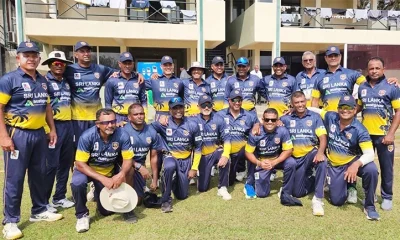
 Sports5 days ago
Sports5 days agoSri Lanka face Australia in Masters World Cup semi-final today
-

 Midweek Review6 days ago
Midweek Review6 days agoImpact of US policy shift on Sri Lanka
-
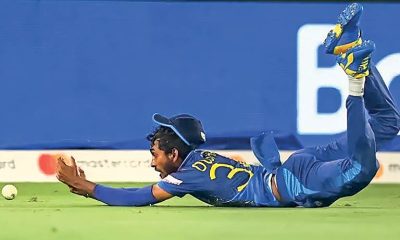
 Sports2 days ago
Sports2 days agoHow Sri Lanka fumbled their Champions Trophy spot
-

 News5 days ago
News5 days agoCourtroom shooting: Police admit serious security lapses
-

 News6 days ago
News6 days agoFSP lambasts Budget as extension of IMF austerity agenda at the expense of people
-
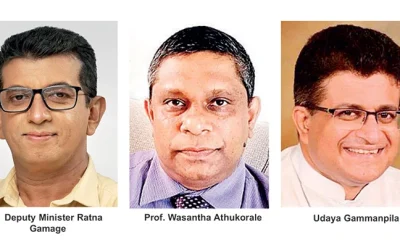
 Business6 days ago
Business6 days agoBudget 2025: A spectrum of reactions and perspectives
-

 News5 days ago
News5 days agoUnderworld figure ‘Middeniye Kajja’ and daughter shot dead in contract killing











